One of the selling points of stainless steel frying pans is that they’re protected from corrosion and rust, and, unlike their carbon steel and cast iron counterparts, they don’t require you to season them.
Technically, that’s true.
Seasoning, the act of baking a thin layer of grain or vegetable oil on the surface of a cooking vessel to keep the metal from reacting to air and moisture, is only necessary when that metal is prone to corrosion and rust.
Cast iron is made of… well, iron.
Carbon steel is made of an alloy of carbon and iron, which hardens the steel and makes it sturdier.
Stainless steel is made of an alloy of iron, carbon, chromium, and nickel—with the latter two protecting it from corrosion and rust and giving it its distinct metallic sheen.
So your stainless steel pan has a cooking surface made of bare, uncoated metal. Yet that metal is completely capable of fending off the attack of oxygen in the air and moisture in cooking liquids, soapy water, and dishwasher cycles, on its own, without seasoning.
On the one hand, that’s good news: opting for stainless steel pans and pots will save you the grunt of seasoning. On the other, an uncoated and unseasoned cooking surface means that there’s nothing to keep the food from sticking to your pan.
That’s why eggs, fish fillets, and any food item that’s high in protein and low in fat can easily get stuck to—and burn on—the cooking surface unless you preheat your pan and cook with plenty of butter or oil.
Search for the topic of seasoning stainless steel on Google, and it won’t take you long to discover a group of food bloggers and communities of home cooks who swear by doing so and claim that a seasoned stainless steel pan offers a nearly non-stick cooking experience.
So, should you season a stainless steel frying pan?
There’s no need to season a stainless steel pan. Contrary to popular belief, it won’t make it less sticky. Instead, preheat your pan for at least 5 minutes and use plenty of cooking oil to keep food from sticking to it.
Though seasoning a stainless steel pan might seem like a potentially helpful thing to do, I tried doing so in a series of experiments for two days in a row (the whole story below), and, at least in my case, it failed to make any difference whatsoever.
Stainless steel pans are inherently sticky. The most effective way to counter that is by preheating your pan for enough time, cooking with plenty of oil, and not rushing to poke, move, or flip the food until it has naturally released itself from the surface.
The formula for stainless steel cooking, as it turns out, is Preheating Time + Cooking Fat + Patience.
How I Came to This Conclusion
The thing about cooking tips on the Internet is that many of them are written by authors who don’t necessarily cook (or, even if they do, they haven’t always tried their own medicine).
As a user of stainless steel cookware myself, I decided to put this to the test.
Part 1: Cooking in Unseasoned Stainless Steel
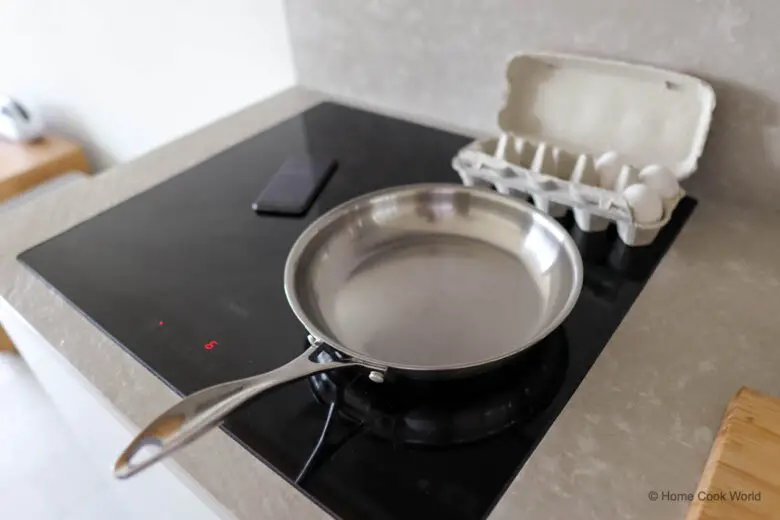
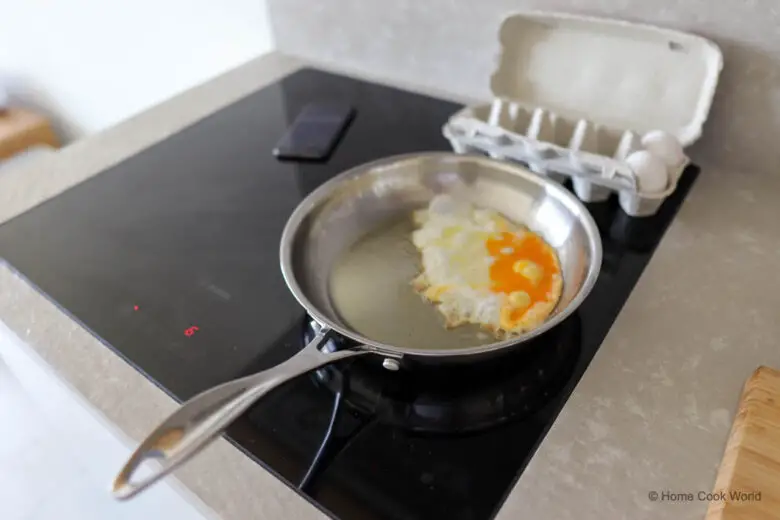
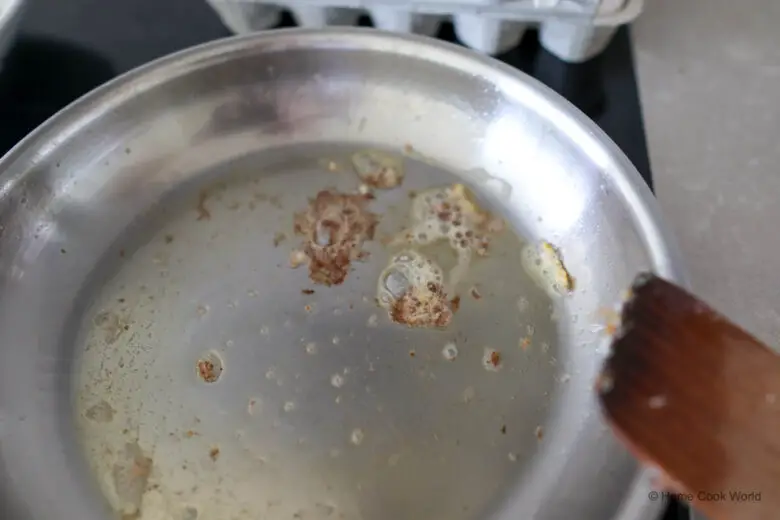
I started by cooking sunny-side-up eggs in a clean and unseasoned stainless steel pan. I preheated the pan on medium-high for 5 minutes, using the timer feature on my iPhone’s Clock app to keep tabs on time.
At the fifth minute, I drizzled a generous amount of rice bran oil and allowed it to get up to heat for 20 seconds. Then, I cracked open an egg in the pan, cooking it flat and still on the scorching-hot surface for 2 1/2 minutes.
Lifting the egg was a challenge: somewhere at the center, bits and pieces of it had stuck to the bottom of my pan. It hadn’t stuck badly enough for me to mangle the egg, but it took a good amount of tactical scraping to release and plate it.
I then let my pan cool down and washed it thoroughly in soapy water with the help of a soft scrub sponge, making sure to clean off any traces of cooking oil left behind for the second step of my experiment.
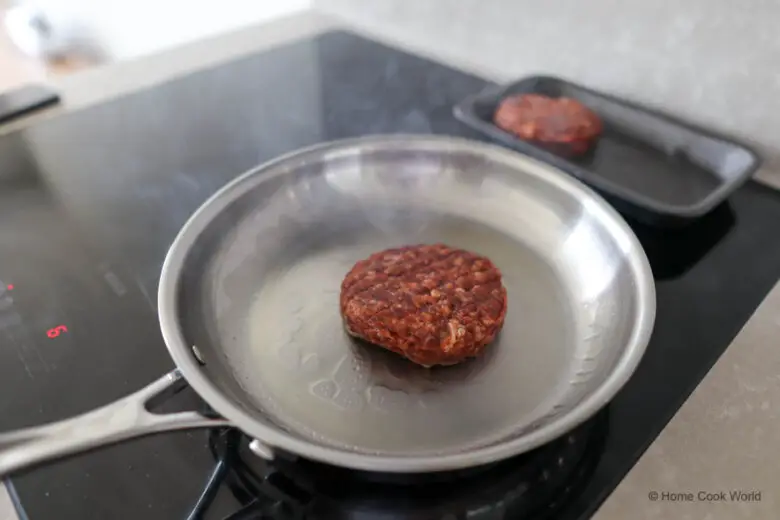
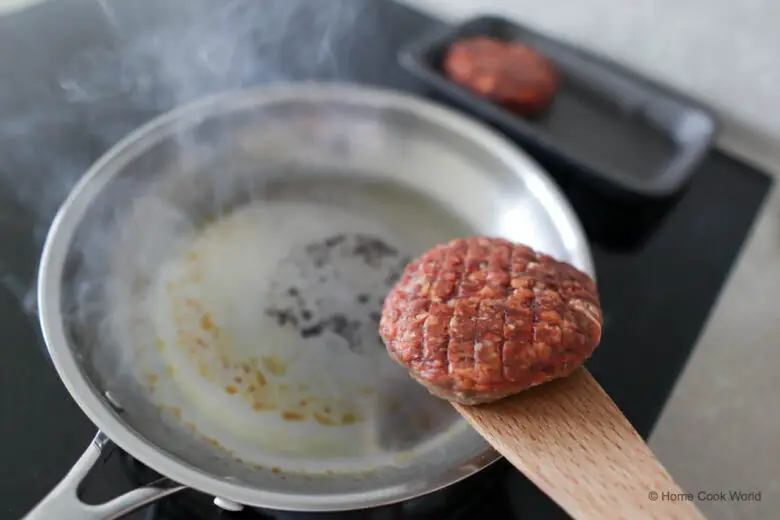
Next up in my test was pan-frying a beef burger patty.
I preheated my pan on medium-high for five minutes, drizzled some rice bran oil at the fifth minute (the patty is fatty, pun intended, so I used less oil than I did for cooking the egg), waiting for 20 seconds for it to heat up, and placed my burger patty on the hot pan.
To cook with stainless steel, you don’t need technique as much as you need patience. At first, almost all foods will stick to the bottom and sides of your pan as the proteins in them form bonds with the metal.
However, as they cook through and a crust forms on the exterior, they will slowly but surely release themselves till they’re ready to be flipped over with the help of a spatula and, hopefully, a tiny amount of scraping.
The burger patty was the perfect illustration for that. After 3 minutes of cooking on each side on an unseasoned stainless steel frying pan, the patty released itself effortlessly and gave me no trouble whatsoever.
Seasoning—even if you swear by it—is clearly not required when you’re preparing fattier foods. Drips of rendered fat will find their way onto the pan, skilfully keeping the meat from sticking to the cooking surface.
So far, so good. In an hour or so’s worth of cooking, I had established that it’s possible to cook sunny-side-up eggs and burger patties in a stainless steel pan, even if the former suffered from a bit of sticking.
I assembled myself a burger and had a snack as I waited for my pan to cool down. It was almost time for the second phase of my experiment, which was seasoning the pan and conducting the same tests all over again.
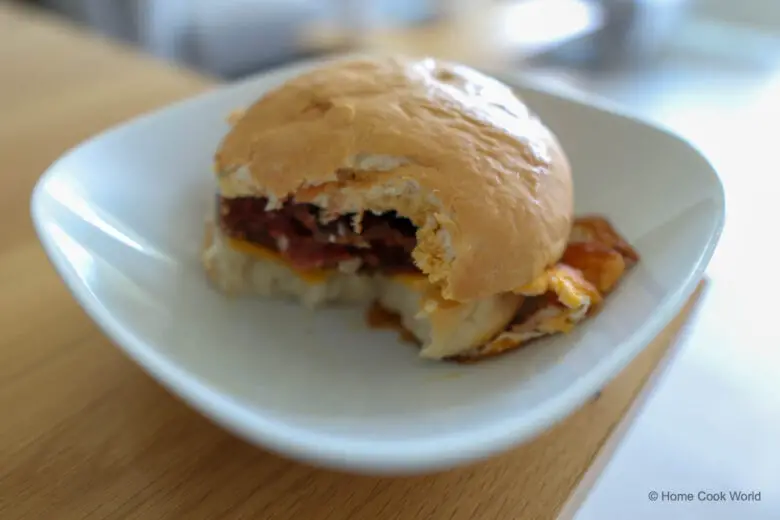
Part 2: Seasoning Stainless Steel
Reading through fellow bloggers’ posts on the topic, it became clear to me that the jury was out as to what’s the correct way—if any—to season a stainless steel frying pan.
As I tried to digest the tips and tricks out there, even I, who’s done a fair share of research into cookware and tested quite a few cooking vessels myself, occasionally struggled to separate fact from fiction.
Made In Cookware, a company that makes good pans and publishes just as good articles on how to care for them, had the most factual article on seasoning stainless steel. The author had laid out the arguments for and against seasoning stainless steel, and shared a good step-by-step guide on how to do it.
In any case, it seemed like a few foundational principles for seasoning stainless steel, which I knew from carbon steel and/or cast iron seasoning, applied:
First, the pan had to be washed with soapy water and pat thoroughly dry, with a paper towel or lint-free dishcloth. That way, the cooking surface would be completely clean to soak up and hold the seasoning.
Second, grain oil or vegetable oil with a high smoke point and neutral flavor was the way to go. That meant that I could choose from avocado, canola, flaxseed, or rice bran oil. For the same reasons, butter and olive oil were out of the question.
Third, and this is something that applies to seasoning carbon steel pans but not cast iron skillets, the pan had to be seasoned on the stove by being preheated for 5 minutes to allow the metal to expand. Then, it had to be rubbed with a very thin layer of oil using a paper towel, with any excess soaked up to prevent pooling.
Finally, the greased pan had to be heated on medium-high for a few minutes so that the oil could polymerize (bake itself) on the metal.
Here’s how that process looked like:
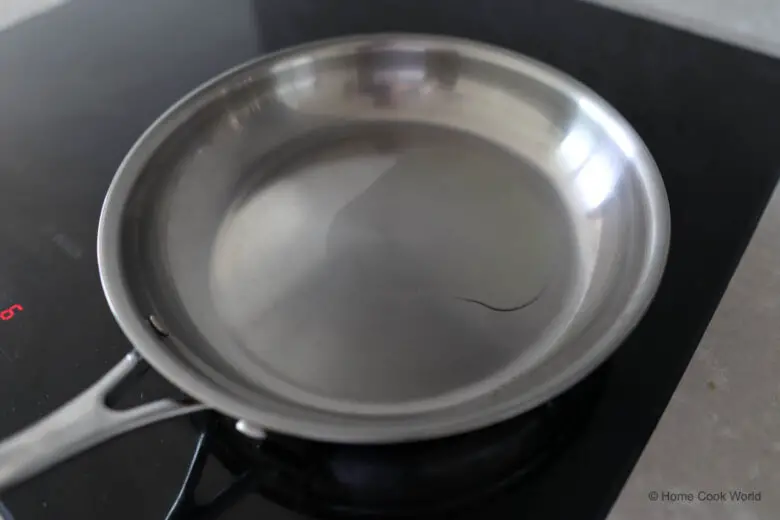

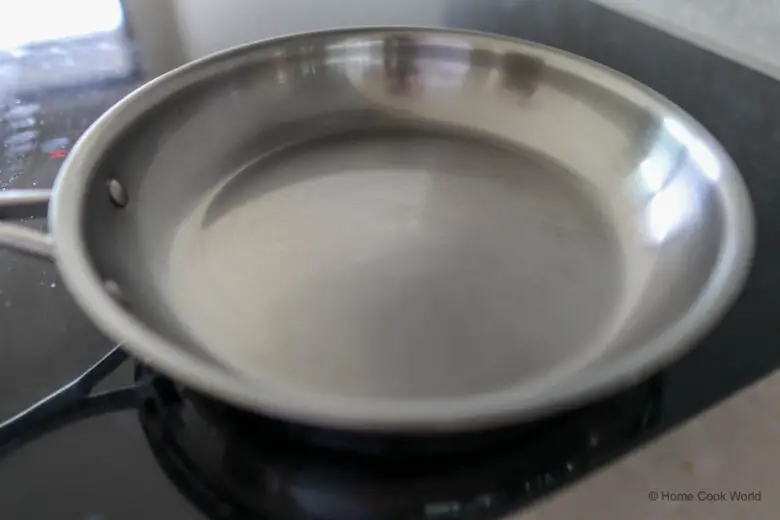
By the time I was done seasoning the pan, I started to think that there could be some truth to the benefits of doing so after all. The cooking surface now had a shiny surface that felt sleeker to the touch.
So I was kind of eager to see if there would be any difference in terms of stickiness (or non-stickiness, that is).
Part 3: Cooking in Seasoned Stainless Steel
For cooking the sunny-side-up eggs in the pan, the same rules applied as previously. I preheated the skillet on medium-high heat for 5 minutes, poured a good amount of cooking oil into the pan, gave it 20 seconds to heat up and start rippling, then cracked open an egg and let it cook for 2 1/2 minutes.
Frankly speaking, I couldn’t notice much of a difference. The egg settled itself on the bottom of the pan and started to fry as a crispy and flavorful crust started to form on the bottom side.
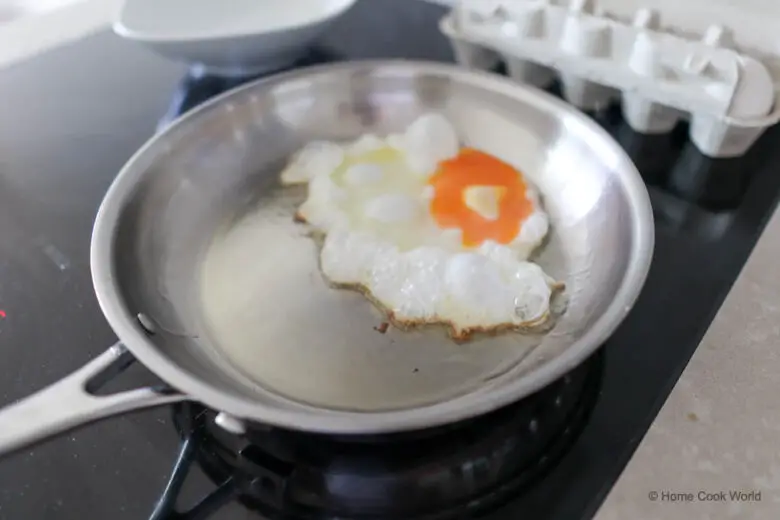
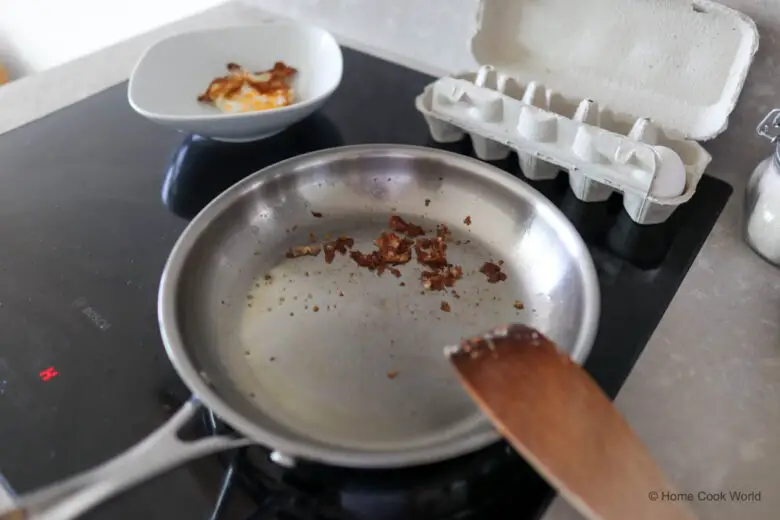
Two and half minutes in, the outcome was underwhelming.
Bits and pieces of the egg had stuck to the bottom of the seasoned pan, in a way and to an extent that were virtually indistinguishable from the first round.
Regardless (and, as any true wannabe-scientist would), I kept on with the experiment.
This time, I didn’t clean the pan with soapy water. Instead, I scraped the eggs off using the tip of my spatula and gave the pan a wipe down with a paper towel. As owners of carbon steel and cast iron skillets know, that’s the “quick” way to clean a seasoned pan without agitating the seasoning with soapy water.
Following the same technique as before, I cooked the second burger patty in my seasoned pan. Once again, I didn’t notice much of difference. My cooking experience was neither stickier nor less sticky than before.
At minute three, the burger had browned on one side and had released itself to 99.9% from the pan, making it nothing short of a breeze to flip over with a wooden spatula.
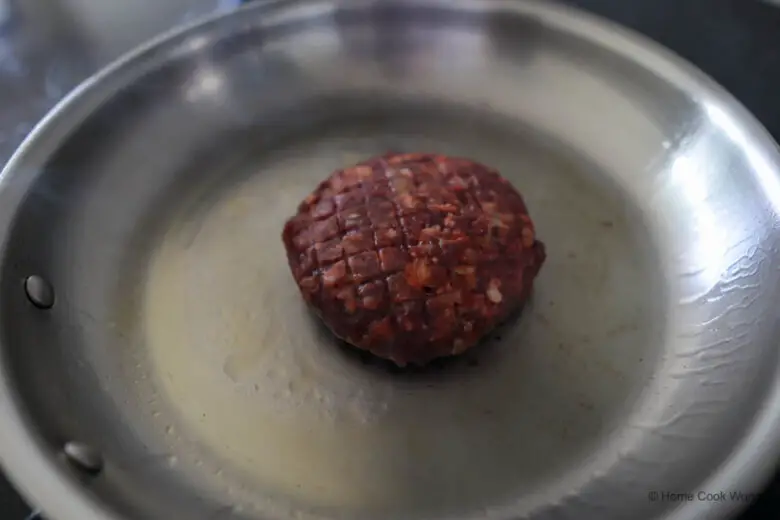
Clearly, I had either seasoned my pan wrong, or seasoning stainless steel was unnecessary to begin with.
With a few more eggs left in the carton, I took a break for the day and repeated the experiment—without the burger patties—the day after. The outcome was the same: no matter how skillfully I’d try to season my pan, it just wouldn’t become any sleeker.
After doing this for two days in a row, my stance is that there’s no need to season stainless steel whatsoever. Rather than trying to solve this riddle, you could probably get better use of your time and more value from your problem-solving skills elsewhere.
Hey, at least the burgers were good!
